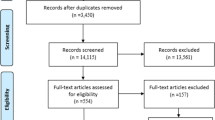Abstract
A group of 90 breast cancer patients undergoing chemotherapy were assessed prospectively to estimate the prevalence of acute (post-treatment) and anticipatory emesis in the 1990s. For this purpose, two protocols of chemotherapy were analysed separately: cyclophosphamide/methotrexate/5-fluorouracil (CMF) and 5-fluorouracil/doxorubicin/cyclophosphamide (FAC). All patients were treated with antiemetic therapy, which included one corticoid plus ondansetron (in the FAC regimen), or one corticoid plus thiethylperazine (in the CMF regimen). For at least one cycle of chemotherapy 86.1% and 91.7% patients in the FAC protocol presented vomiting and nausea respectively; 11.1% had anticipatory vomiting and 30.6% had anticipatory nausea. In the CMF protocol, 79.6% had post-chemotherapy vomiting and 71.7% had post-chemotherapy nausea associated with at least one cycle. In this group, 7.4% had anticipatory vomiting and 16.6% had anticipatory nausea. A high proportion of patients suffered anticipatory anxiety in both groups (75% in FAC, 74.1% in CMF). The stimuli most frequently associated with the appearance of anticipatory emesis were olfactory stimuli and cognitive stimuli. In summary, as a result of the advances made in antiemetic control during the last decade, the severity of chemotherapy-induced emesis seems to have significantly decreased, but the prevalence of these symptoms along the course of the treatment still remains high.
Similar content being viewed by others
References
Aapro MS (1989) Una nueva clase de antieméticos: los antagonistas de la serotonina (5-HT3). Rev Cáncer 3:134–137
Aapro M, Kirchner V, Terrey JP (1992) Is anticipatory nausea and vomiting a thing of the past? Proc Am Soc Clin Oncol 11:394
Aapro MS, Kirchner V, Terrey JP (1994 The incidence of anticipatory nausea and vomiting after repeat cycle chemotherapy: the effect of granisetron Br J Cancer 69:957–960
Andrykowski MA (1990) The role of anxiety in the development of anticipatory nausea in cancer chemotherapy: a review and synthesis. Psychosom Med 52:258–275
Andrykowski MA, Jacobsen PB, Marks E, Gorfinkle K, Hakes TB, Kaufman RJ, Currie VE, Holland JC, Redd WH (1988) Prevalence, predictors and course of anticipatory nausea in women receiving adjuvant chemotherapy for breast cancer. Cancer 62:2607–2613
Boakes RA, Tarrier N, Barnes BW, Tattersall MHN (1993) Prevalence of anticipatory nausea and other side-effects in cancer patients receiving chemotherapy. Eur J Cancer 29A:866–870
Clavel M, Soukop M, Greenstreet YLA (1993) Improved control of emesis and quality of life with ondansetron in breast cancer. Oncology 50:180–185
Cohen RE, Blanchard EB, Ruckdeschel JC, Smolen RC (1986) Prevalence and correlates of posttreatment and anticipatory nausea and vomiting in cancer chemotherapy. J Psychosom Res 30:643–654
Diehl V, Marty M (1994) Efficacy and safety of antiemetics. Cancer Treat Rev 20:379–392
Eyre HJ, Ward JH (1984) Control of cancer chemotherapy-induced nausea and vomiting. Cancer 54:2642–2648
Fetting JH, Wilcox PM, Iwata BA, Criswell EL, Bosmajian LS, Sheidler VR (1983) Anticipatory nausea and vomiting in ambulatory medical oncology population. Cancer Treat Rep 67:1093–1098
Haut MW, Beckwith BE, Laurie JA, Klatt N (1991) Postchemotherapy nausea and vomiting in cancer patients receiving outpatient chemotherapy. J Psychosoc Oncol 9:117–130
Jacobsen PB, Bovbjerg DH, Redd WH (1993) Anticipatory anxiety in women receiving chemotherapy for breast cancer. Health Psychol 12:469–475
Jones AL, Hill AS, Soukop M, Hutcheon AW, Cassidy J, Kaye SB, Sikora K, Carney DN, Cunningham D (1991) Comparison of dexamethasone and ondansetron in the prophylaxis of emesis induced by moderately emetogenic chemotherapy. Lancet 338:483–486
Martin M (1992) Myths and realities of antiemetic treatment. Br J Cancer 66 [Suppl 19]:S46-S51
Martin M, Diaz-Rubio E, Casado A, Dominguez S, Sastre J (1992) Progressive loss of antiemetic efficacy during subsequent courses of chemotherapy. Eur J Cancer 28:430–432
Martin Jimenez M (1985) Ensayos clínicos sobre la emesis inducida por quimioterapia antineoplásica. Tesis Doctoral, Universidad Complutense de Madrid
Morrow GR, Dobkin PL (1988) Anticipatory nausea and vomiting in cancer patients undergoing chemotherapy treatment: prevalence, etiology, and behavioral interventions. Clin Psychol Rev 8:517–550
Roila F, Tonato M, Basurto C, Bracarda S Picciafuoco M, Del Favero A (1989) Factores pronósticos de la emesis inducida por quimioterapia. Rev Cáncer 3:120–124
Watson M, Marvell C (1992) Anticipatory nausea and vomiting among cancer patients: a review. Psychol Health 6:97–106
Watson M, Mccarron J, Law M (1992) Anticipatory nausea and emesis, and psychological morbidity: assessment of prevalence among outpatients on mild to moderate chemotherapy regimens. Br J Cancer 66:862–866
Author information
Authors and Affiliations
Rights and permissions
About this article
Cite this article
Fernández-Marcos, A., Martín, M., Rodriguez-Lescure, A. et al. Acute and anticipatory emesis in breast cancer patients. Support Care Cancer 4, 370–377 (1996). https://doi.org/10.1007/BF01788844
Issue Date:
DOI: https://doi.org/10.1007/BF01788844




